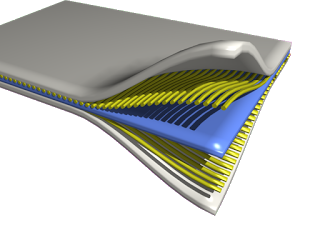Global Automotive Composites Market Set to Exceed USD 7.5 Billion by 2024
The global Automotive Composites Market stood at over USD 3 billion in 2015 and is expected to surpass USD 7.5 billion by 2024 expanding at a CAGR of over 8.5 %. Rising preference for high fuel efficiency in passenger cars and growing vehicle production, particularly in the Asia-Pacific (APAC) region, will drive the global market during the forecast period (from 2016 to 2024).

Increasing urban population base, especially in developing countries such as India & China, will offer numerous growth opportunities to the market players. However, recyclability issues along with high costs of raw material are likely to hinder the worldwide Industry growth. The global market is categorized into products, applications, and regions.
Based on products, the global automotive composites market is segmented into Ceramic Matrix Composites (CMC), Metal Matrix Composites (MMC), and Polymer Matrix Composites (PMC). Polymer matrix composite is further categorized into Carbon Fiber Reinforced Polymer composites (CFRP) or natural fiber reinforced polymer composites and Glass Fiber Reinforced Polymer composites (GFRP). The metal matrix composites (MMC) market is likely to exceed USD 435 million by 2023.
Browse Details of Report @ https://www.hexaresearch.com/research-report/automotive-composites-market
The market for CFRPs is the fastest-growing and is projected to grow at a healthy CAGR during the forecast period. Strict environmental rules and demand for fuel-efficient cars will propel this segment. And increased application base for composites in latest vehicle models will also add to the demand.
On the basis of applications, the global automotive composites industry is fragmented into interior, exterior, engine, and powertrain components. Owing to widespread expansion, chassis and powertrain components has been the fastest growing segment over the past couple of years. The exterior components segment led the market due to high demand for aesthetic appeal and attractiveness in passenger cars. Engine & powertrain components is projected to witness maximum gains in the years to come. The global market is also segmented on the basis of technology into manual, continuous, injection, and compression.
Regionally, the automotive composites industry is categorized into Europe, Asia Pacific (APAC), North America, Central and South America (CSA), and the Middle East and Africa (MEA). Surging income levels along with rapid industrialization in various developing countries has resulted in the greatest industry share in this region. Frequent business ventures and numerous product launches have made the region a lucrative hub for high investments. The European automotive composites market will register moderate growth from 2016 to 2024. Stringent environmental rules by the European government will boost regional growth. United Kingdom, Germany, and France automotive composite markets will perform favorably owing to the presence of major automobile manufacturers such as Renault and BMW. The North American region is also expected to have steady gains due to a rise in the customer spending capacity post recession.
The global industry is highly consolidated one with four key players holding 70 % of the total market share. Some of the key companies are Mitsubishi Corp.; Toho Co. Ltd.; Toray Industries Inc.; and Koninklijke Ten Cate N. V.
Browse Related Category Market Reports @ https://www.hexaresearch.com/research-category/automotive-and-transportation-industry